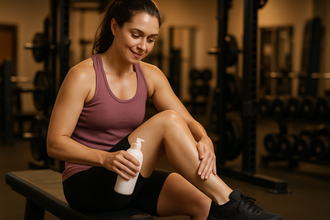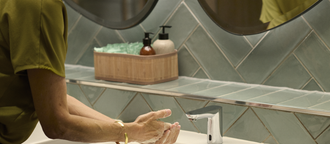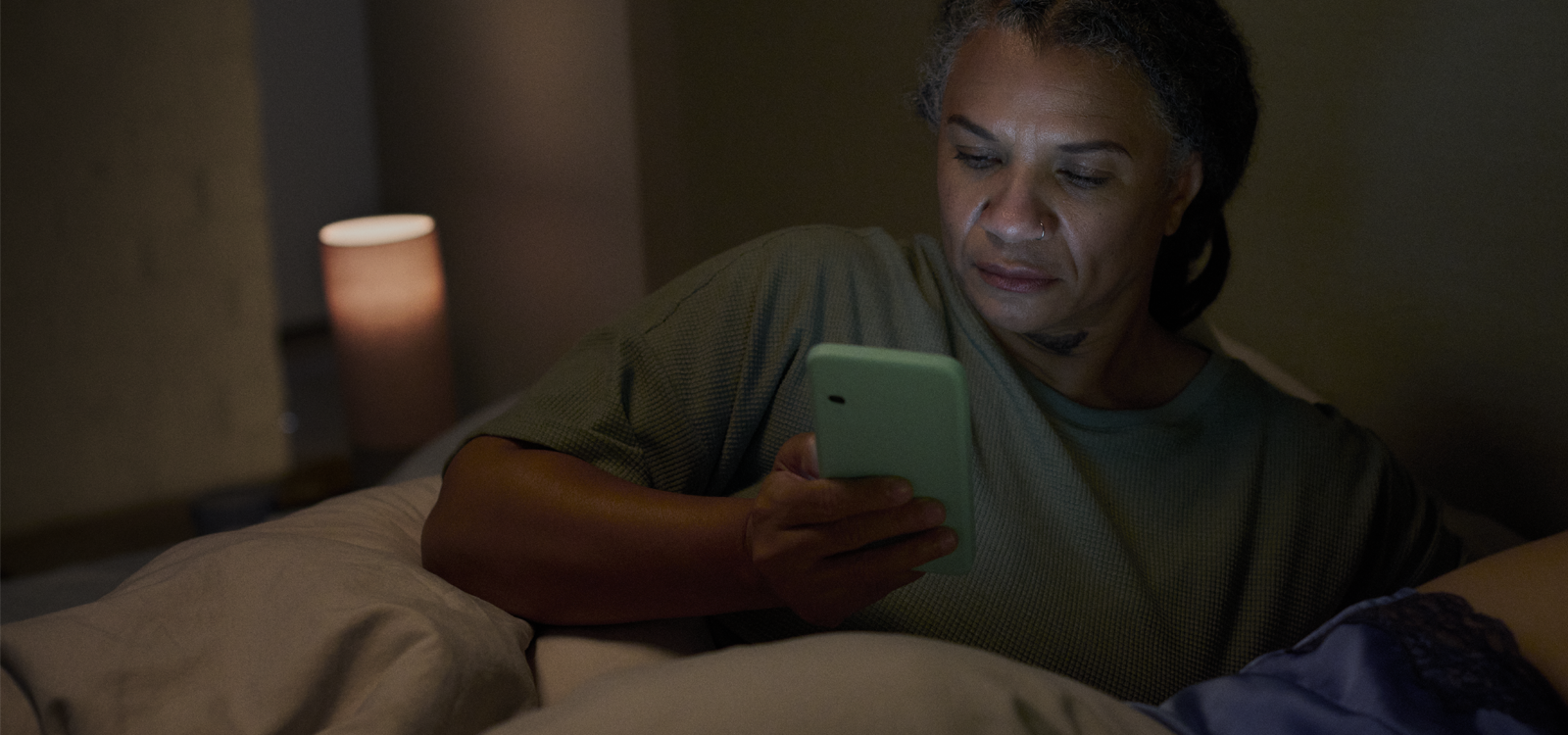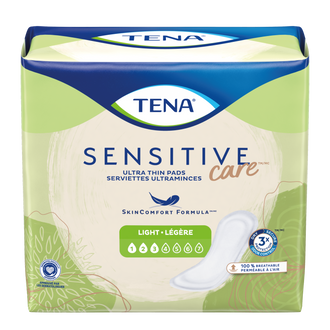Nov 11, 2024
If you’ve ever felt that sudden urge to run to the bathroom—only to find it hard to hold it in—you might be dealing with an overactive bladder (OAB).
Understanding the symptoms, possible causes, and how to manage OAB can help you take control and improve your quality of life. Let’s dive into some insights and helpful tips for managing an overactive bladder.
What is an Overactive Bladder?
Overactive bladder (OAB) might sound a bit intimidating, but it’s essentially that sudden, uncontrollable urge to rush to the bathroom.1 Sometimes, this can lead to some unintentional leakage, which isn’t just annoying but can also be pretty embarrassing.1
OAB isn’t just a problem for one gender or age group; it can affect anyone. In fact, the statistics show that as many as 61% of people with OAB will experience symptoms even with treatment, albeit to varying degrees.1
You might notice symptoms like needing to urinate often, feeling an urgent need to go, or waking up at night to visit the bathroom—something known as nocturia.1 Various factors can contribute to OAB, including hormonal changes, nerve issues, or other underlying health conditions.2
It’s estimated that more than 1 in 4 adult women and 1 in 6 adult men in the United States deal with overactive bladder (OAB).1 Getting a handle on what OAB is and how it works is the first step toward taking back control and improving your day-to-day life.1
Explore Expert Advice on Types of Incontinence:
- Understanding Urinary Incontinence in Adults
- Essential Tips for Overactive Bladder Care
Medical Treatments to Manage Incontinence
When it comes to managing incontinence, there’s no one-size-fits-all solution and what works best can really depend on your unique situation.3 While there are some more medical routes that you can take, there are also some lifestyle and home changes you can make to help with bladder control. A healthcare practitioner should be able to give you the best treatment advice.
Natural Remedies to Ease an Overactive Bladder
If you’re looking for non-medical ways to manage the symptoms of an overactive bladder, lifestyle and behavioral changes can make a big difference.3
Pelvic Floor Exercises
Pelvic floor muscle exercises, like Kegel exercises, are a great way to strengthen your pelvic floor muscles and urinary sphincter.4 When these muscles are stronger, they can help prevent your bladder from contracting involuntarily.4
If you’re unsure how to do Kegel exercises, a healthcare professional or physical therapist can guide you through the process. 4
Just like any other exercise, the effectiveness of Kegels relies on consistency, so it’s important to do them regularly.4 You might start to notice improvements after about six weeks of practice. Remember, consistency is key, and you may not see results for a few weeks, so stick with it.4
Read > Fight Urinary Leaks with Pelvic Floor Exercises
Changing Lifestyle to Help Control Your Bladder
Making some lifestyle changes can also help ease OAB symptoms. Here are a few tips:
- Maintain a Healthy Weight: Keeping your weight in check can reduce the pressure on your bladder.3
- Quit Smoking: Smoking can irritate your bladder muscle, so kicking the habit can provide relief.3
- Manage Fluid Intake: Pay attention to how and when you drink. Try moderating your fluid intake and timing it throughout the day.4
- Bladder Training: Techniques like scheduled voiding or deliberately delaying urination can help increase your bladder's capacity over time.3
- Manage Constipation: It's important to manage constipation since it can make urinary incontinence even worse. Your healthcare provider might suggest increasing your fiber intake to help with this.4
Foods and Drinks That Soothe Your Bladder
What you eat and drink can have an impact on your bladder health. Some food items may irritate your bladder, including caffeine, alcohol, spicy foods and acidic foods and drinks.3
Keeping a bladder diary can help you identify any personal triggers.4 And while staying hydrated is essential, it’s wise to limit fluid intake in the evening to reduce nighttime trips to the bathroom.
Read > What to Eat and Drink for Bladder and Kidney Health
Using a Pad or Guard in the Interim
While you’re looking into longer-term treatments for incontinence, using pads and guards can be a practical way to manage leaks in the meantime.
These products are designed to absorb leaks while keeping things discreet, so you can carry on with your daily activities without a worry:
- Pads and Liners: These are great for light to moderate leaks and can easily fit into your regular underwear. They’re discreet and super simple to use. If you want to check out some options, take a look at: Women’s Incontinence Pads
- Guards for Men: These are specially contoured products that fit the male anatomy, providing protection right where it’s needed. For more info, check out Incontinence Guards for Men
- Protective Underwear and Briefs: you’re dealing with heavier incontinence, pull-up style underwear or briefs (often called adult diapers) offer more absorbency and comfort. You can find options under Briefs, also referred to as adult diapers.
While pads and guards are helpful for immediate management, don’t forget to use them alongside your lifestyle adjustments to work toward long-term improvement.
Explore More Advice Around Pads and Guards:
- How to Wear Male Incontinence Pads, Guards, and Shields: A Step-by-Step Guide
- How Often Should you Change your Pad?
By taking these steps, you can manage your symptoms more comfortably while you search for effective solutions.
When to Reach Out for Help with Bladder Leaks?
One of the main challenges of overactive bladder (OAB) is that it can really impact your quality of life.1 So, if you’re dealing with any urological symptoms that are causing you constant anxiety or making it hard to get through your day, don’t hesitate to ask your healthcare provider for a referral to a urologist for a closer look.1
It’s also crucial to recognize the symptoms of OAB and not brush them off as just a normal part of aging.1 While it’s true that OAB is more common in older adults, it doesn’t mean that everyone has to deal with it!1
Here are some signs you should pay attention to and consider seeing a urologist if you’re experiencing1:
- A persistent urge to urinate
- Frequent trips to the bathroom (more than seven times a day)
- Bladder spasms
- Incontinence or leaking urine
- Waking up at night to urinate (one or more times)
- Bedwetting
With the right treatment, many people see a significant reduction in their symptoms, and in some cases, they might even disappear altogether! So don’t wait—reach out for help if you need it.1
References
1. VeryWellHealth. ‘Symptoms of Overactive Bladder’. 2023. Available from: https://www.verywellhealth.com/overactive-bladder-symptoms-5114619
2. MayoClinic. ‘Overactive Bladder’. 2024. Available from: https://www.mayoclinic.org/diseases-conditions/overactive-bladder/symptoms-causes/syc-20355715
3. ClevelandClinic. ‘Overactive Bladder’. 2022. Available from: https://my.clevelandclinic.org/health/diseases/14248-overactive-bladder#management-and-treatment
4. MayoClinic. ‘Diagnosis and Treatment’. 2024. Available from: https://www.mayoclinic.org/diseases-conditions/overactive-bladder/diagnosis-treatment/drc-20355721






































































































